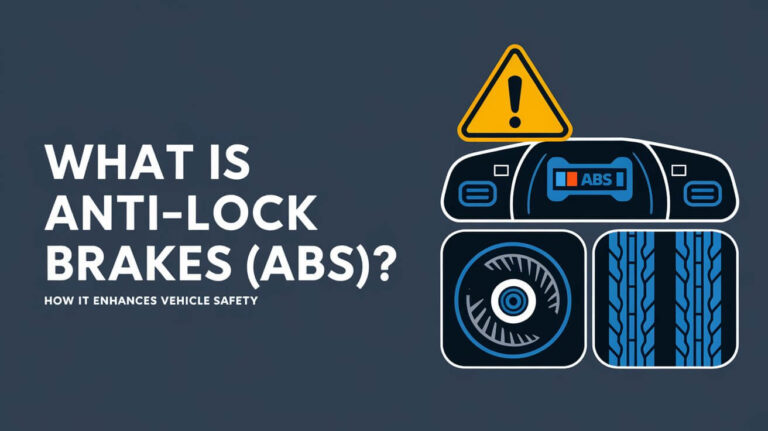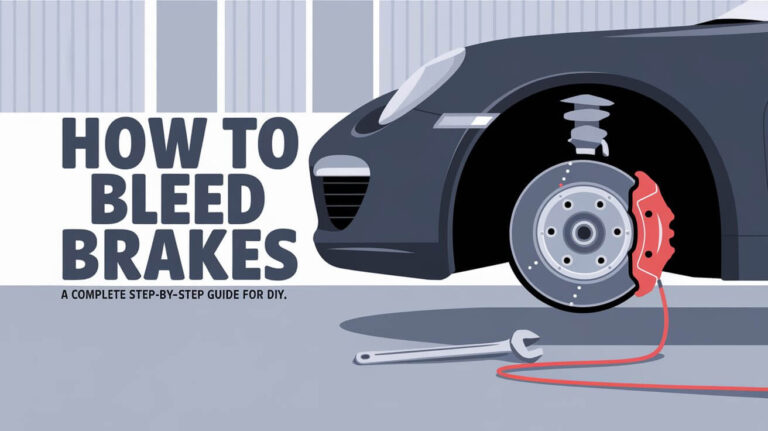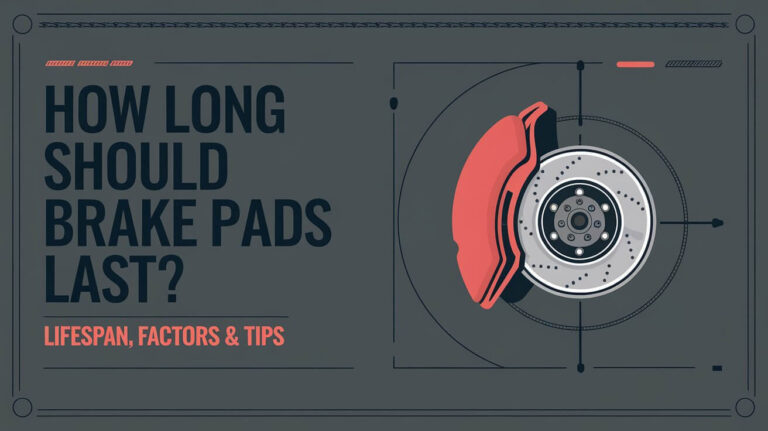How Long Do Brake Pads Last? Key Factors & Tips for Longevity

Brake pads are one of the most essential components in a vehicle’s braking system. They directly impact the car’s ability to stop, making them crucial for safety. But exactly how long do brake pads last? Generally, brake pads last between 25,000 to 65,000 miles, though this can vary widely depending on factors like driving style, vehicle type, and environmental conditions. Below, we’ll explore the lifespan of brake pads in-depth, answering all related questions, and providing practical tips for prolonging their life.
What Affects Brake Pad Lifespan?
A number of factors determine how long your brake pads will last. Understanding these variables can help you anticipate when you might need a replacement and take steps to extend the life of your brake pads.
Driving Style
One of the biggest factors affecting brake pad wear is driving style. Here’s how different driving behaviors influence brake pad longevity:
- Aggressive Driving: Frequent, hard braking wears down brake pads quickly. This is especially true in stop-and-go traffic.
- Smooth Driving: Gradual braking helps prolong brake pad life. Drivers who anticipate stops and brake gently tend to get more mileage out of their brake pads.
Driving Conditions
Where and how often you drive also influences brake pad lifespan:
- City Driving: Frequent stops and starts in urban traffic put extra wear on brake pads, often reducing their lifespan significantly.
- Highway Driving: Highway driving generally requires fewer stops, meaning brake pads last longer compared to city driving.
- Mountainous or Hilly Areas: Roads with frequent inclines require more braking, causing pads to wear faster.
Vehicle Weight and Load
The weight of a vehicle plays a crucial role in how quickly brake pads wear down. Heavier vehicles, like trucks or SUVs, put more strain on brakes, leading to faster wear. Additionally, vehicles that frequently carry heavy loads—such as trucks used for hauling—will also see faster brake pad wear.
Environmental Conditions
The surrounding environment and weather can also affect brake pad life. For example:
- Hot Climates: Heat can cause brake components to wear faster.
- Humidity: High moisture levels can lead to rust and corrosion in the brake system, potentially affecting brake pad performance.
- Cold Climates: Extremely low temperatures may harden brake pads, affecting performance and causing wear under certain conditions.
Brake Pad Material
The type of brake pads installed in a vehicle significantly impacts their lifespan. Here are the common types:
- Organic Brake Pads: Made from non-metallic materials, organic pads are affordable and quiet but wear out faster. These are suitable for light-duty vehicles in city driving conditions.
- Semi-metallic Brake Pads: Comprising about 30-65% metal, semi-metallic pads are more durable than organic pads but can be noisier and contribute to rotor wear. They are ideal for heavier vehicles and performance applications.
- Ceramic Brake Pads: Known for their durability, ceramic pads are quieter and produce less dust, but they’re also the most expensive. They tend to last the longest, making them a popular choice for long-lasting performance.
How Many Miles Do Brake Pads Last On Average?
The average lifespan of brake pads ranges between 25,000 and 65,000 miles, but this can vary widely. Here’s a breakdown based on typical scenarios:
Typical Brake Pad Lifespan in Miles
- Average Drivers: For those with balanced driving habits and mixed city/highway driving, brake pads generally last around 40,000 miles.
- Highway Drivers: Those who primarily drive on highways with fewer stops can expect their brake pads to last up to 60,000 miles or more.
- City Drivers: Drivers in urban environments who experience frequent stops may find their brake pads lasting closer to 25,000 miles.
Variations in Lifespan
While 40,000 miles is often considered a general average, some brake pads wear out sooner or last much longer based on individual driving factors. It’s not uncommon to see brake pads needing replacement at 20,000 miles in city driving or lasting up to 100,000 miles in ideal conditions.
How to Know When Your Brake Pads Need Replacement
Knowing the signs of worn brake pads can help prevent more costly repairs and keep you safe on the road. Here are some key indicators:
Warning Signs of Worn Brake Pads
- Squealing or Screeching Noises: Most brake pads include a wear indicator that emits a high-pitched squeal when the pad material is almost worn through.
- Decreased Braking Performance: If stopping distances feel longer than usual or if the brakes don’t respond as they used to, it’s likely time for new pads.
- Vibrations or Pulsating Brake Pedal: A pulsing sensation in the brake pedal often indicates uneven wear or warped rotors, which can also accelerate brake pad wear.
- Dashboard Warning Light: Many modern vehicles have sensors that trigger a warning light on the dashboard when brake pads are nearing the end of their life.
How to Check Brake Pad Thickness
A quick visual inspection can often reveal the condition of your brake pads. Ideally, brake pads should be replaced once they’re down to 1/8 inch thick. You can inspect the pads by looking through the wheel openings, though a more thorough check may require removing the wheels.
How to Extend the Life of Your Brake Pads
By adopting certain habits, you can significantly increase the lifespan of your brake pads and save money over time.
Smooth and Steady Driving
One of the easiest ways to extend brake pad life is to drive smoothly. Avoid sudden, hard braking whenever possible, and plan stops in advance.
Avoid Overloading Your Vehicle
Excessive weight puts extra stress on the braking system. Try to avoid carrying unnecessary heavy loads, and if your vehicle is regularly used for towing, consider using brake pads designed specifically for heavy-duty applications.
Regular Maintenance and Inspections
Routine maintenance can prevent excessive brake pad wear. Here are some recommended practices:
- Regular Inspections: Get brake pads inspected during regular oil changes or tire rotations to catch early signs of wear.
- Brake Fluid Checks: Low brake fluid levels can impact braking performance, so be sure to keep an eye on this as well.
Types of Brake Pads and Their Lifespan
Each type of brake pad has unique characteristics that impact durability and performance. Here’s an overview of the primary types and their typical lifespans:
Organic Brake Pads
- Lifespan: Typically 20,000 to 40,000 miles.
- Pros: Organic pads are quieter and suitable for light-duty applications.
- Cons: They wear faster and are not ideal for heavy vehicles or high-performance driving.
Semi-Metallic Brake Pads
- Lifespan: Approximately 30,000 to 60,000 miles.
- Pros: Semi-metallic pads are durable and well-suited for performance driving and heavier vehicles.
- Cons: They may be noisier and can wear down the rotors faster than other types.
Ceramic Brake Pads
- Lifespan: Typically 60,000 to 100,000 miles.
- Pros: Known for durability and quiet operation, ceramic pads produce less brake dust and are a top choice for longevity.
- Cons: They are more expensive than other types.
Frequently Asked Questions About Brake Pads
Can You Replace Brake Pads Without Replacing Rotors?
Yes, you can replace brake pads without replacing the rotors as long as the rotors are in good condition and meet the required thickness. However, if rotors are warped, heavily grooved, or below the minimum thickness, it’s best to replace both pads and rotors for optimal performance.
Do Front or Rear Brake Pads Wear Out Faster?
In most vehicles, the front brake pads wear out faster than the rear pads. This is because the front brakes handle the majority of braking force, especially during sudden stops.
How Can You Check Brake Pads Without Removing the Wheels?
In some vehicles, it’s possible to check brake pad thickness by looking through the openings in the wheels. However, for a more accurate assessment, removing the wheels may be necessary.
What Happens if You Ignore Worn Brake Pads?
Ignoring worn brake pads can lead to several issues, including:
- Decreased Braking Performance: Worn pads reduce the car’s ability to stop quickly.
- Damage to Rotors: Continued use of worn brake pads can damage the rotors, leading to costly repairs.
- Increased Risk of Accidents: With compromised braking power, there is a greater risk of accidents, especially in emergencies.
How to Choose the Right Brake Pads for Your Vehicle
Selecting the correct brake pads depends on your driving habits, vehicle type, and performance preferences.
Factors to Consider
- Vehicle Type: Heavier vehicles may benefit from semi-metallic or ceramic pads.
- Driving Environment: City drivers may prefer organic pads, while those in high-performance scenarios or mountainous areas might choose semi-metallic or ceramic options.
OEM vs. Aftermarket Brake Pads
OEM (Original Equipment Manufacturer) Pads are usually cost-effective and sufficient for most driving conditions. However, Aftermarket Performance Pads may offer extended lifespan and better performance, especially for those driving in challenging conditions.
Conclusion
Brake pads are essential for safe driving, and understanding their lifespan helps you maintain optimal vehicle performance. By being mindful of driving habits, environment, and regular maintenance, you can maximize the lifespan of your brake pads and enhance overall safety. Regular inspections and proactive replacements are key to safe driving, so make brake maintenance a priority.




